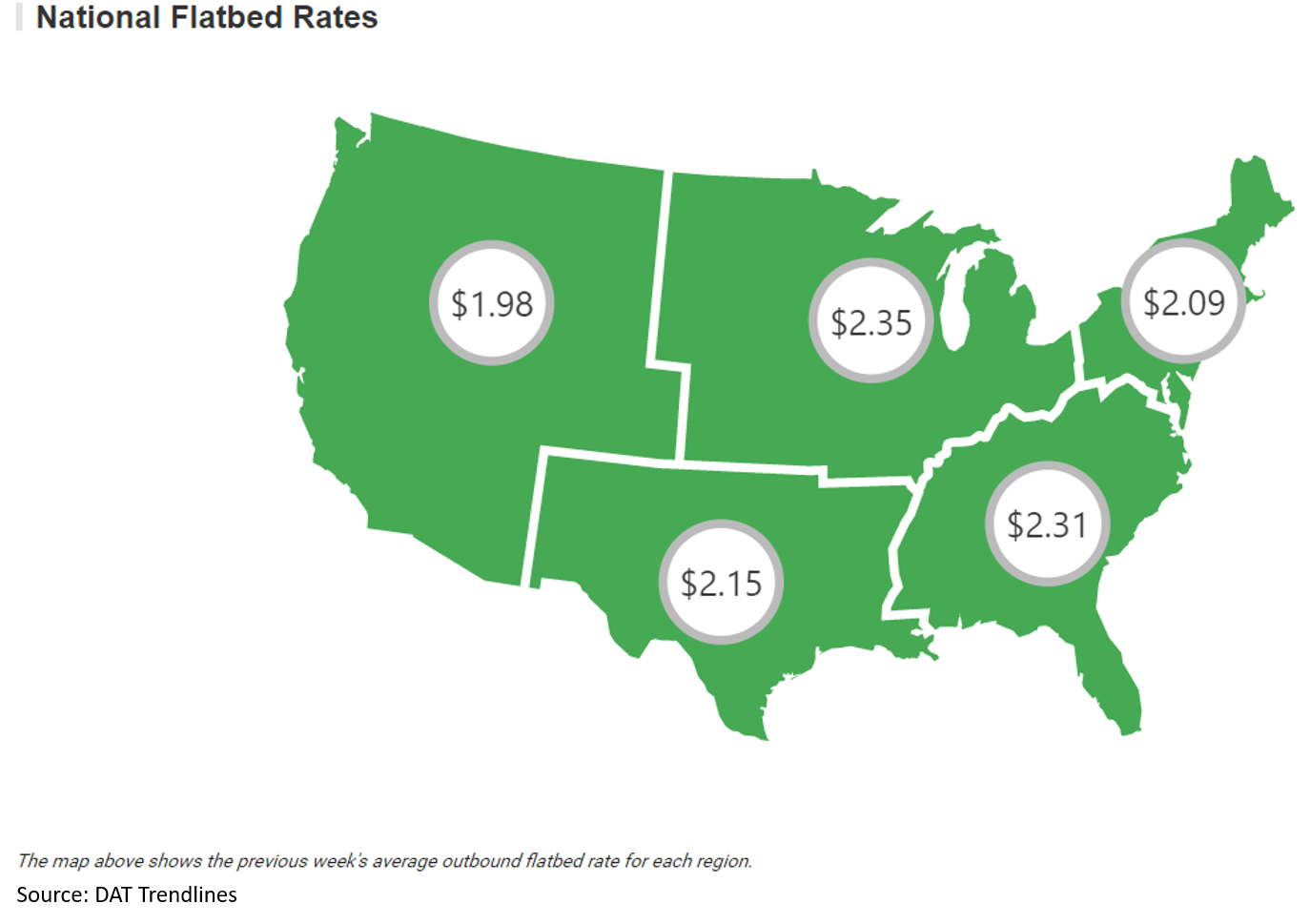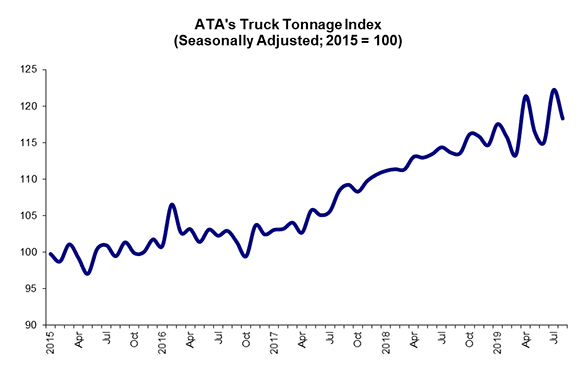Shipping and Logistics

ATA: Trucking Trend Line Still Moving Up
Written by Sandy Williams
September 23, 2019
The trucking barometer is not pointing toward a recession, says the American Trucking Association, citing its latest For-Hire Truck Tonnage Index.
The August index declined 3.2 percent to a reading of 118.3 after climbing 6.2 percent in July. Compared to a year ago, the seasonally adjusted index was up 4.1 percent and gained 4.3 percent on a year-to-date basis.
“The large swings continued in August, but the good news is the trend line is still up,” said ATA Chief Economist Bob Costello. “While there is concern over economic growth, truck tonnage shows that it is unlikely the economy is slipping into a recession. It is important to note that ATA’s tonnage data is dominated by contract freight, which is performing significantly better than the plunge in spot market freight this year.”
DAT Trendlines reports that severe flooding in the Houston area due to tropical storm Imelda disrupted freight shipments and rates last week. Unlike Hurricane Dorian, which boosted inbound truck traffic before the storm, Imelda caused lost productivity and lower freight volumes into and out of the region.
The disruption led to lower load-to-truck ratios for all types of trucks. The national ratio for flatbed trucks fell 4.0 percent during the week of Sept. 16-22 to 13.77 loads per truck.

Flatbed spot rates rose 1.2 percent last week compared to the previous week. National spot rates for flatbeds averaged $2.19 per mile in September, down just slightly from $2.20 per mile in August.
As of Sept. 23, the U.S. on-highway diesel fuel price averaged $3.081 per gallon, up $0.094 from a week ago and down $0.190 from a year ago.

Sandy Williams
Read more from Sandy WilliamsLatest in Shipping and Logistics

US Great Lakes iron ore cargoes down notably through May
The Lake Carriers' Association reported a considerable decline in monthly iron ore shipments from US ports on the Great Lakes.

Wittbecker: West Coast port congestion
What's going on in West Coast ports?

Wittbecker: Mexico invests in port capacity despite US tariff troubles
The Mexican government aims to transform Manzanillo into the largest seaport in Latin America, capable of processing some 10 million TEU (20-foot equivalent units) per year by 2030. It is already Mexico's largest port and the third largest in Latin America, handling nearly 4 million 20-foot containers in 2024.

Wittbecker on Aluminum: When do the tariffs reach Main Street?
Containers sailing from China in April are down 15%-20% and Hapag Lloyd says their future bookings transpacific are down 30%.

Wittbecker on Aluminum: US-China trade war clobbers cross-Pacific trade
Container shipping lines have sharply increased blank sailings on Transpacific routes in response to escalating trade tensions between the US and China.

